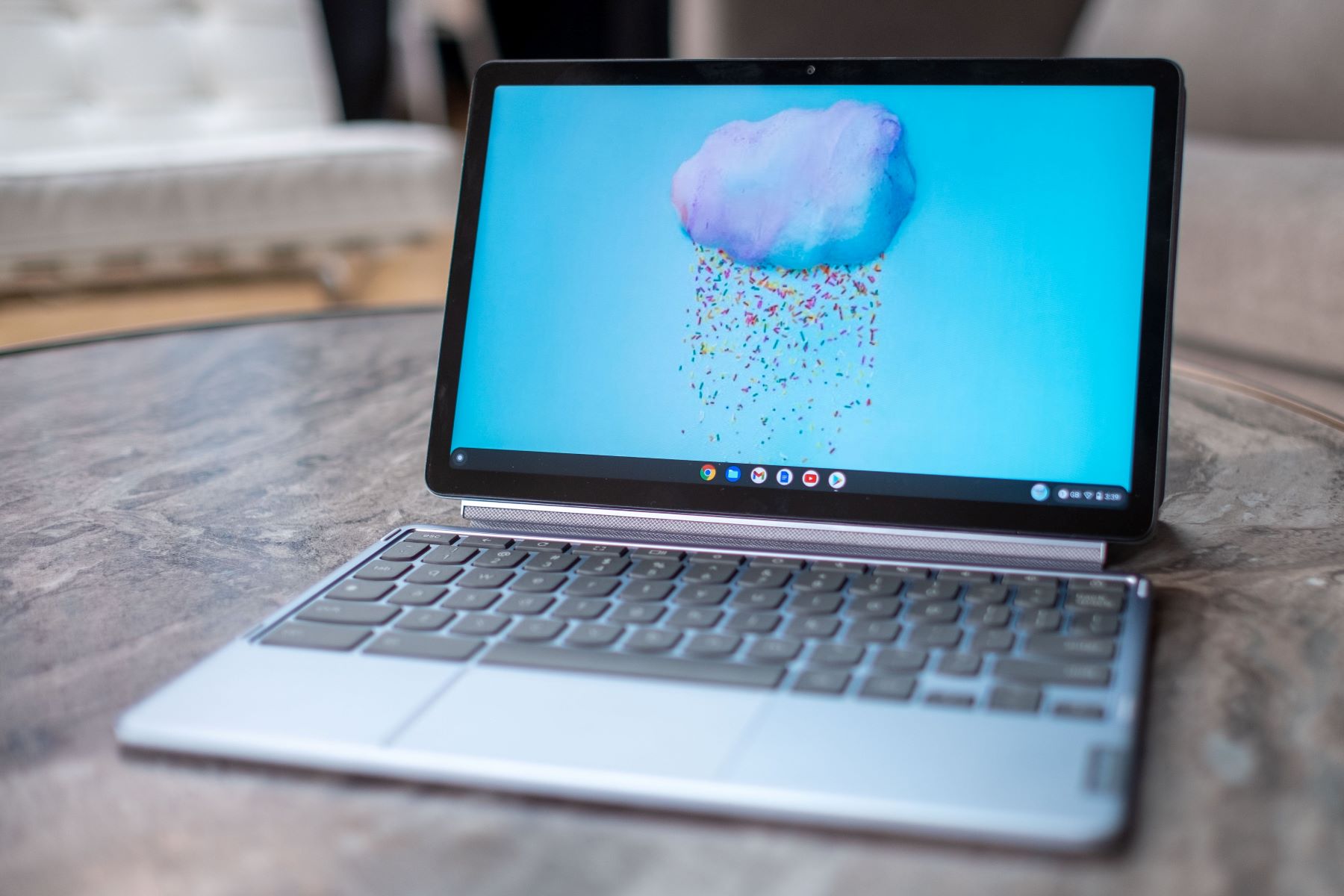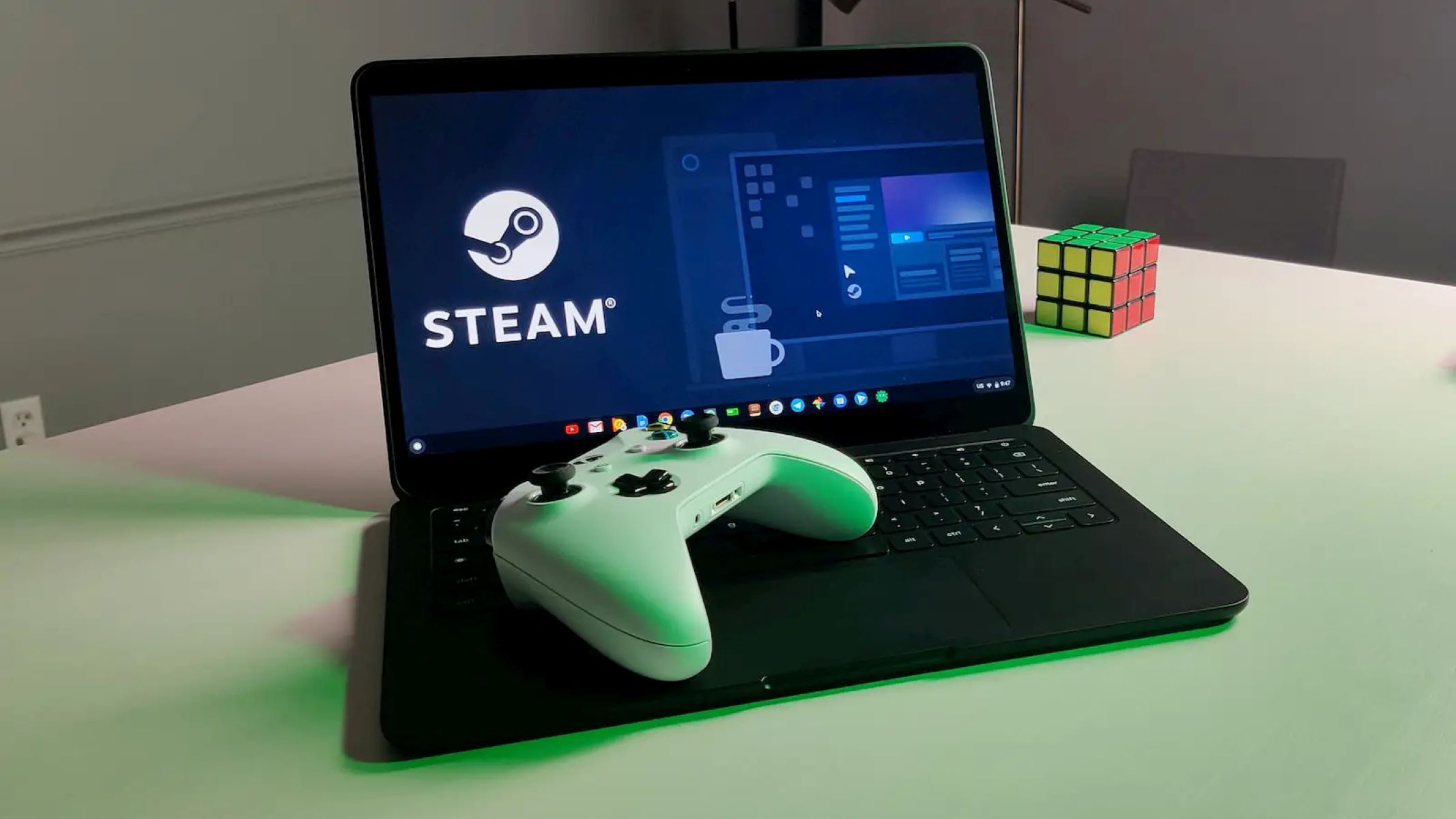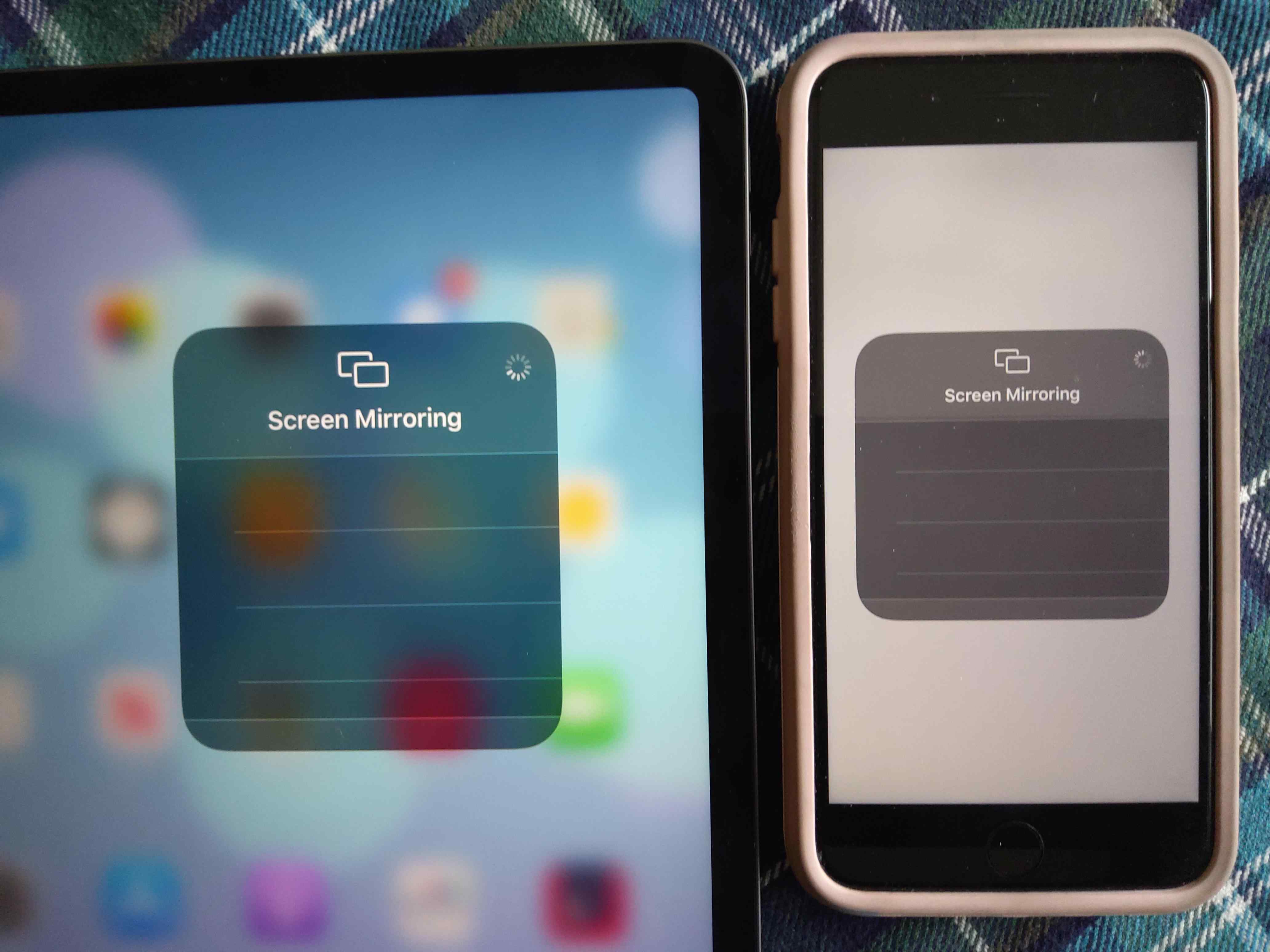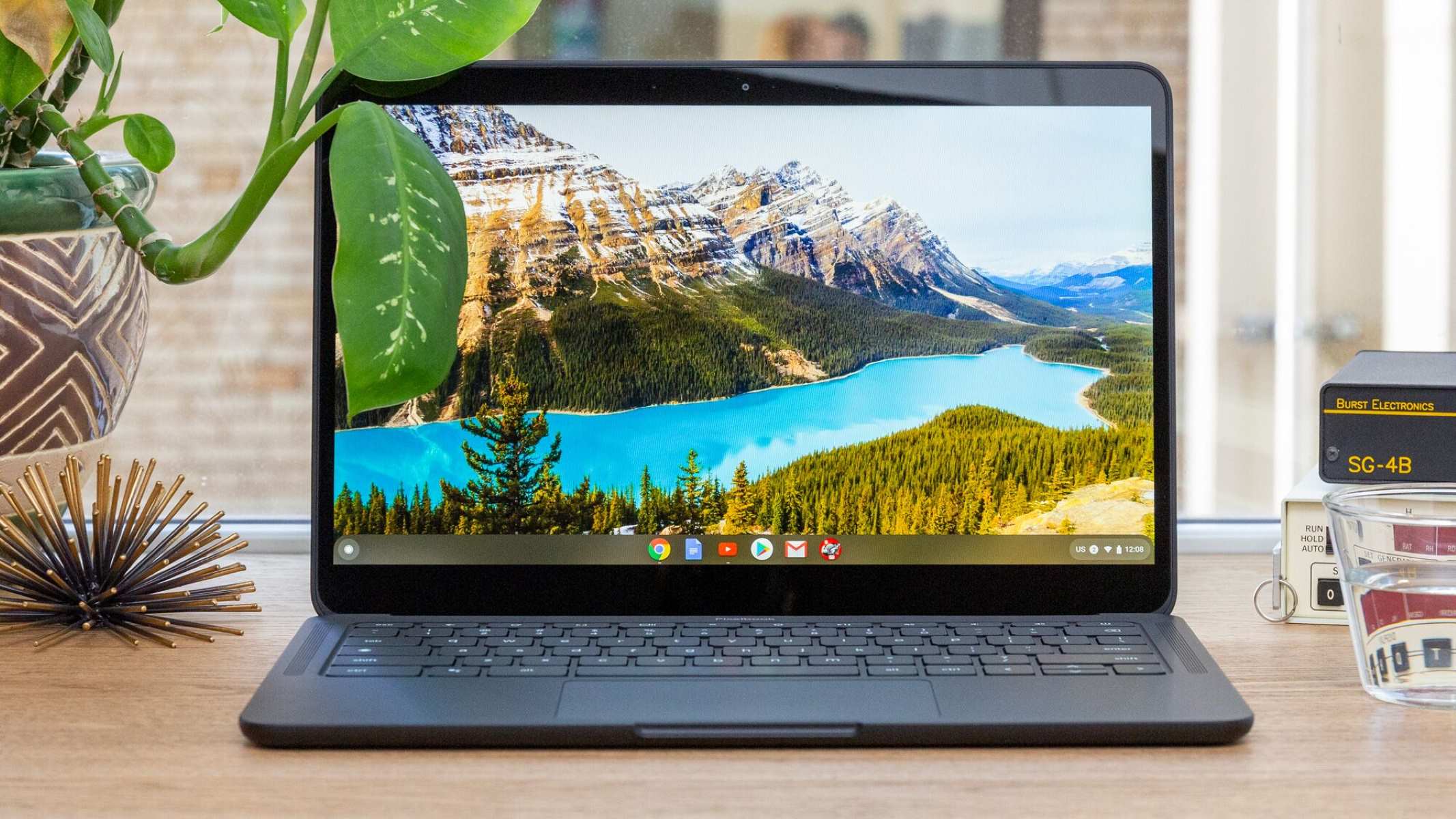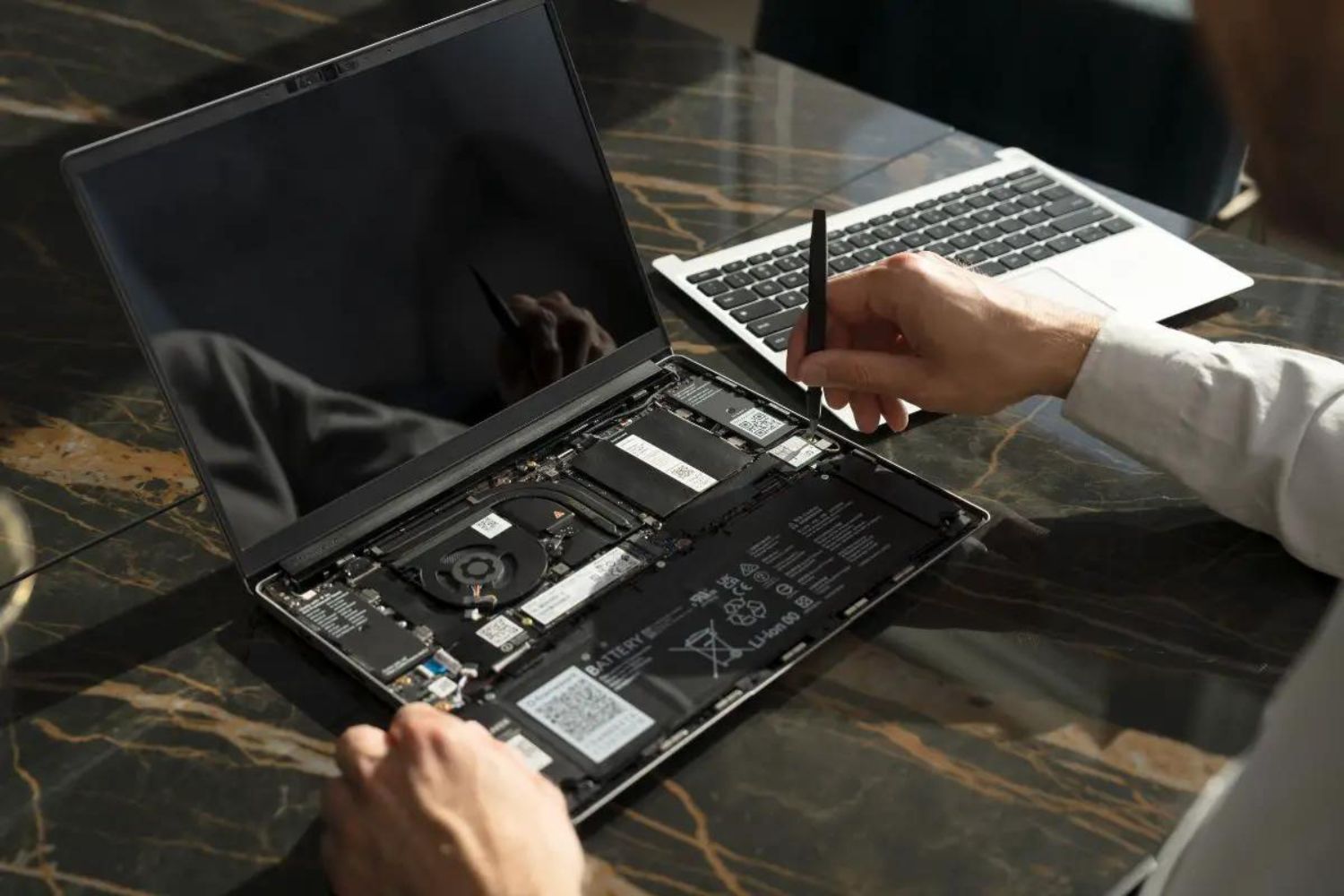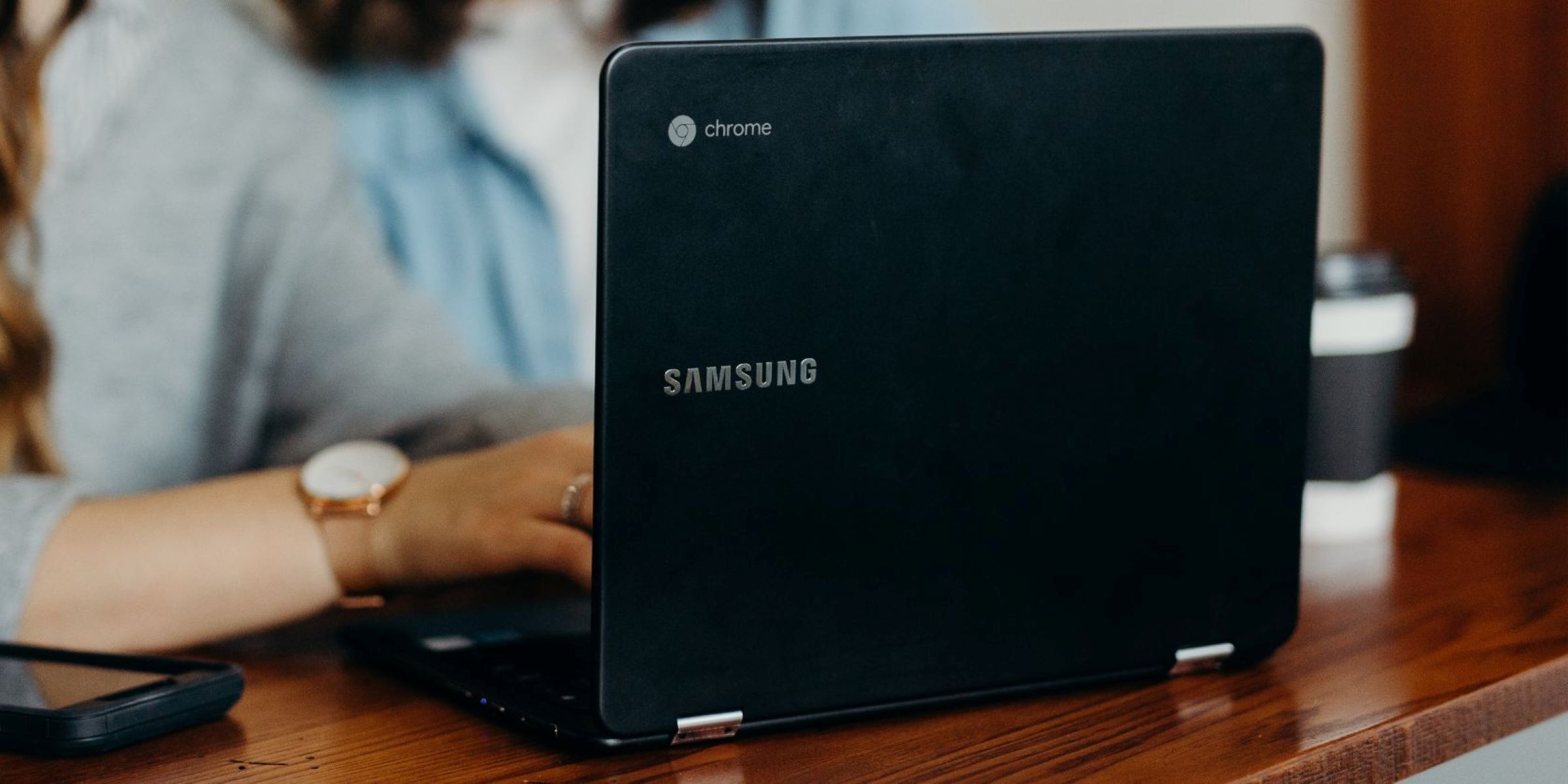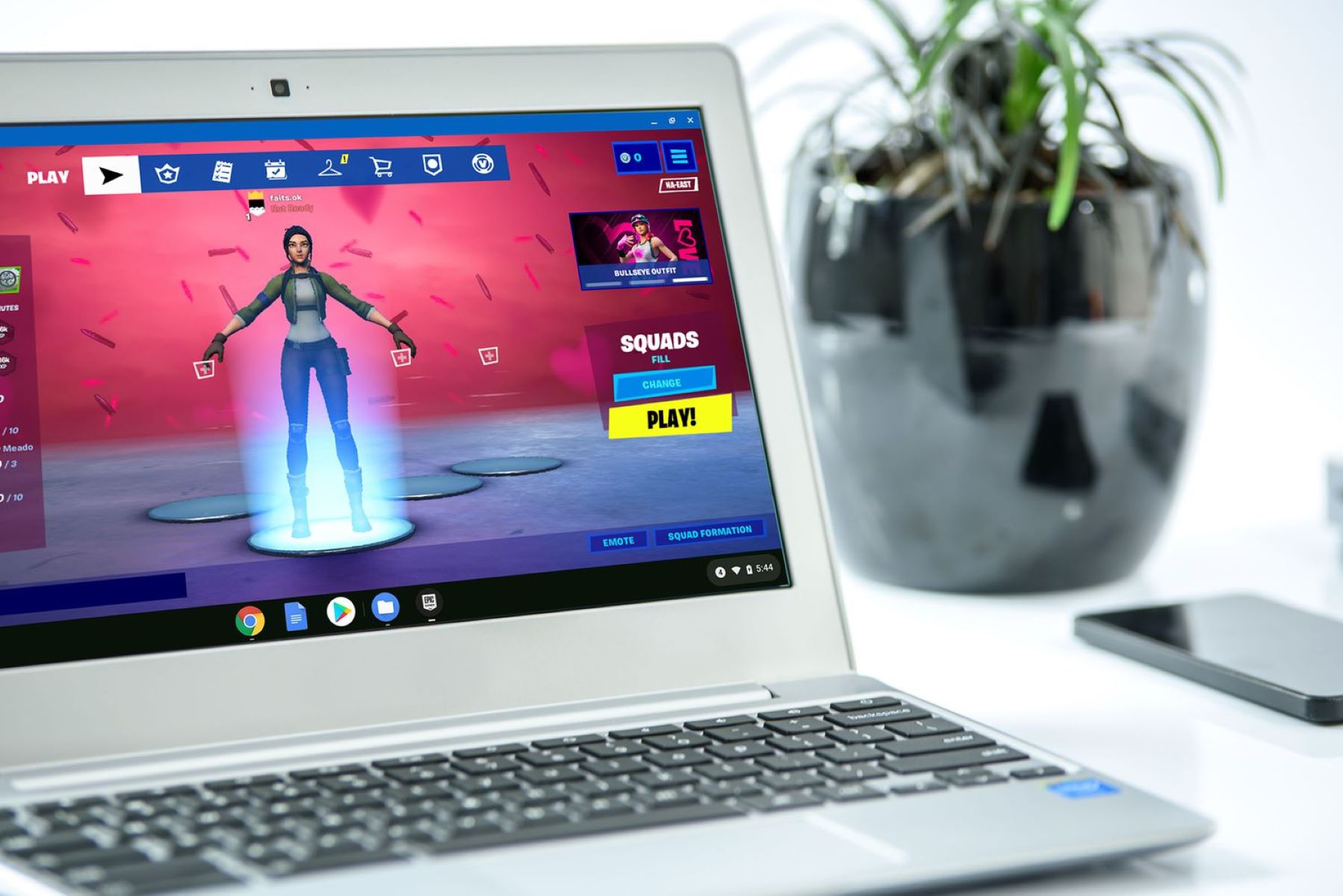Introduction
Welcome to the world of Chromebooks! In this digital age, computers have become an essential tool for work, education, and entertainment. However, with so many options available, it can be overwhelming to choose the right device that fits your needs. One popular choice in recent years has been the Chromebook.
So, what exactly is a Chromebook? Put simply, it is a laptop that runs on the Chrome OS, a Linux-based operating system developed by Google. While traditional laptops are known for their robust software and hardware, Chromebooks take a slightly different approach.
Unlike their Windows or macOS counterparts, Chromebooks are designed to be lightweight, fast, and mainly dependent on an internet connection. They have gained popularity due to their affordability, simplicity, and secure operating system. Whether you’re a student, professional, or casual user, a Chromebook could be an excellent option for you.
In this guide, we’ll explore the world of Chromebooks, including their history, features, uses, and the pros and cons of owning one. Whether you’re considering purchasing a Chromebook or simply curious about this popular computing device, this guide will provide you with a comprehensive overview to help you make an informed decision.
So, let’s dive in and discover what makes a Chromebook unique and whether it’s the right choice for you!
What is a Chromebook?
A Chromebook is a type of laptop that runs on the Chrome operating system (Chrome OS) developed by Google. It is designed to be simple, secure, and highly efficient, making it an ideal choice for various users.
One key characteristic that sets Chromebooks apart from traditional laptops is their heavy reliance on web-based applications and cloud storage. The Chrome OS is primarily a web-based operating system, meaning most of the applications and software are accessed through a web browser like Google Chrome.
Chromebooks typically have a compact and lightweight design, making them portable and easy to carry. They come in various screen sizes, ranging from 11 inches to 15 inches, with most models offering a full HD display for a crisp and vibrant viewing experience.
Under the hood, Chromebooks are powered by a range of processors, from entry-level Intel Celeron to high-performance Intel Core i7. The amount of RAM and storage capacity can vary depending on the model, but many Chromebooks offer sufficient memory and storage for everyday tasks.
One of the main advantages of Chromebooks is their quick boot-up time. Thanks to the lightweight Chrome OS, these devices can start up within seconds, allowing users to jump straight into their work or browse the web without any delay.
Security is also a strong suit of Chromebooks. Due to the nature of the operating system, Chromebooks are less susceptible to malware and viruses. They come with built-in security features like automatic system updates and sandboxing, which isolate each application to prevent the spread of threats.
Another notable aspect of Chromebooks is their seamless integration with Google services. Since they are developed by Google, Chromebooks provide easy access to popular applications like Gmail, Google Drive, Google Docs, and Google Photos. These cloud-based services offer a convenient way to store and access files from anywhere with an internet connection.
Moreover, Chromebooks offer excellent battery life, with many models boasting up to 10 hours of usage on a single charge. This extended battery life allows users to work and play without constantly worrying about finding a power outlet.
In the next section, we’ll delve into the history of Chromebooks and how they have evolved over time to become a popular choice for many individuals and organizations.
History of Chromebooks
The concept of Chromebooks can be traced back to 2009 when Google announced its intention to develop a new operating system focused on web-based applications. With the goal of providing a simple and efficient computing experience, Google introduced Chrome OS in 2011, along with the first line of Chromebooks.
Initially, Chromebooks faced skepticism from tech enthusiasts who questioned the viability of a laptop running primarily on web applications. However, as the operating system evolved and internet connectivity became more widely available, Chromebooks gained traction among users seeking a lightweight and affordable computing solution.
With each passing year, Chromebooks continued to improve in terms of performance and features. In 2013, touchscreen models were introduced, providing a more interactive experience for users. In 2017, Google released the Pixelbook, a premium Chromebook with a sleek design and enhanced hardware specifications.
Chromebooks also gained popularity in the education sector due to their affordability and ease of use. Google’s push for Chromebooks in the education market led to the development of features like Google Classroom, which simplifies the management of assignments and collaboration among students and teachers.
Over time, Chromebooks have become more versatile, accommodating different user preferences and needs. In 2019, Google released the Pixelbook Go, a more budget-friendly Chromebook option with a traditional laptop design. Additionally, there are now Chromebooks with convertible designs, allowing the screen to rotate 360 degrees and function as a tablet.
As the demand for cloud-based computing continues to grow, Google has expanded its Chromebook lineup to cater to various user segments. There are Chromebooks targeting business professionals, offering enterprise-grade security features and compatibility with productivity tools like Microsoft Office. Additionally, Google’s partnership with manufacturers like Dell, HP, and Lenovo has resulted in a wider range of Chromebook options in terms of specifications and design.
Looking ahead, the future of Chromebooks seems promising. With ongoing advancements in hardware and software, these devices are becoming more capable of handling demanding tasks. The integration of Android app support and Linux compatibility on Chrome OS has further enhanced the versatility and app ecosystem of Chromebooks.
In the next section, we’ll explore the features and functionalities that make Chromebooks a unique and appealing option for users around the world.
Features of Chromebooks
Chromebooks come with a range of features that make them stand out from other laptops. These features contribute to their simplicity, efficiency, and overall user experience. Let’s take a closer look at some of the key features of Chromebooks:
1. Chrome OS: The operating system of Chromebooks, Chrome OS, is designed to be lightweight, fast, and secure. It provides a streamlined interface and easy access to web-based applications, making it ideal for users who primarily rely on web-based tasks.
2. Cloud-Based Storage: Chromebooks emphasize cloud storage with the integration of Google Drive. This allows users to store their files, documents, and photos online, accessible from any device with an internet connection. This seamless integration ensures that your files are always backed up and easily accessible.
3. Automatic Updates: Chromebooks receive regular automatic updates from Google, ensuring that users always have the latest security patches and features. This eliminates the need for manual updates and helps keep the device secure and up to date.
4. Web-based Applications: Chromebooks primarily rely on web applications available through the Google Chrome browser. Users can access popular applications such as Gmail, Google Docs, Google Sheets, and more, directly from their Chromebook.
5. Google Assistant: Chromebooks come with built-in Google Assistant support, allowing users to perform tasks via voice commands. The virtual assistant can help with various tasks like searching the web, setting reminders, or controlling smart home devices.
6. Touchscreen and Convertible Options: Many Chromebook models offer touchscreens for a more interactive experience. Additionally, there are convertible Chromebooks that can be used as a laptop or tablet by flipping or detaching the keyboard. This versatility provides flexibility in how users interact with the device.
7. Long Battery Life: Chromebooks are known for their impressive battery life. Most models can easily last throughout the day on a single charge, making them ideal for users who are always on the go and need a device that can keep up with their busy schedule.
8. Android App Compatibility: In addition to web-based applications, Chromebooks have the ability to run Android apps from the Google Play Store. This significantly expands the software ecosystem of Chromebooks, enabling users to access a wide range of apps designed for Android devices.
9. Simplified Setup and Maintenance: Setting up a Chromebook is quick and easy. Users simply need to log in with their Google account, and their preferences and settings will be synced across devices. Furthermore, maintenance is hassle-free, with automatic updates and less vulnerability to malware or viruses.
These features combined make Chromebooks a compelling choice for users who require a straightforward and efficient computing experience. In the next section, we’ll explore the operating system of Chromebooks in more detail.
Operating System of Chromebooks
The operating system (OS) of Chromebooks, known as Chrome OS, is developed by Google and designed specifically for these devices. Chrome OS is based on the Linux kernel and is built around the Chrome web browser. It offers a unique and streamlined computing experience that sets it apart from other operating systems.
Chrome OS is known for its simplicity and speed. Upon starting the device, users are greeted with a clean and minimalistic interface, reminiscent of the Chrome browser. The focus of the operating system is on web applications, making it seamlessly integrated with Google’s suite of productivity tools such as Google Drive, Gmail, Google Docs, and more.
One of the notable features of Chrome OS is its ability to sync users’ preferences and settings across different devices. By logging in with their Google account, users can access their bookmarks, extensions, and other personalized settings from any Chromebook or Chrome browser they use.
Because Chromebooks heavily rely on web applications and cloud storage, the storage capacity of the device itself is often modest. However, Google mitigates this limitation by including free cloud storage through Google Drive, where users can store their files, documents, and media. This cloud-centric approach ensures that users have access to their files from anywhere, as long as they have an internet connection.
Chrome OS is known for its excellent security features. With automatic updates and sandboxing, Chromebooks are less susceptible to malware and viruses. The operating system is designed with security in mind, ensuring that users can browse the web and use applications with peace of mind.
Another advantage of Chrome OS is its quick boot-up time. Thanks to its lightweight nature, Chrome OS allows Chromebooks to start up within seconds. This means users can quickly get to work or browse the web without having to wait for the operating system to load.
While Chromebooks primarily rely on web applications, they also offer support for Android apps through the Google Play Store. This integration gives users access to a vast catalog of apps designed for smartphones and tablets. The ability to use Android apps expands the capabilities of Chromebooks, making them more versatile and adaptable to different user needs.
In summary, Chrome OS is a lightweight and secure operating system designed specifically for Chromebooks. Its emphasis on web applications, seamless integration with Google services, and strong security features make it an appealing choice for users seeking a simple and efficient computing experience.
In the next section, we’ll explore the range of apps and software available on Chromebooks, further expanding their functionality.
Apps and Software on Chromebooks
Chromebooks offer a diverse range of apps and software that enhance their functionality and cater to various user needs. While Chrome OS primarily relies on web-based applications, it also supports Android apps through the Google Play Store, expanding the software ecosystem of these devices. Let’s explore the apps and software available on Chromebooks:
1. Web-based Applications: Chromebooks excel at running web-based applications through the Chrome browser. Access to popular Google services like Gmail, Google Docs, Google Sheets, and Google Slides is seamless and integrated, allowing users to work and collaborate efficiently.
2. Google Play Store: Chromebooks have access to the Google Play Store, allowing users to install Android apps. This includes a wide range of apps across categories like productivity, communication, entertainment, games, and more. From video streaming platforms to social media applications, Chromebooks can run Android apps for enhanced functionality.
3. Chrome Web Store: The Chrome Web Store is a marketplace specifically for apps and extensions designed to enhance the Chrome browsing experience. Users can find various productivity tools, ad blockers, note-taking apps, and more. Chromebooks can install these web-based apps and extensions to customize their browsing experience and boost productivity.
4. Linux Support: Chrome OS now has support for Linux applications, expanding the range of software that can be installed on Chromebooks. This enables developers and power users to utilize Linux-based tools for coding, programming, and other advanced tasks.
5. Microsoft Office Online: Chromebooks have access to the web-based versions of Microsoft Office applications, including Word, Excel, and PowerPoint. Through the Microsoft Office Online suite, users can create, edit, and collaborate on documents effortlessly.
6. Education-focused Apps: With their popularity in the education sector, Chromebooks have a wide range of educational apps available. These apps cater to students and educators, offering interactive learning tools, digital textbooks, online study guides, and more.
7. Cloud Storage Apps: In addition to Google Drive, Chromebooks support other cloud storage services like Dropbox and Microsoft OneDrive. Users can install these apps to easily access and manage files stored in different cloud storage platforms.
8. Multimedia Apps: Chromebooks support a variety of multimedia apps, including video and music streaming platforms like Netflix, Spotify, and YouTube. Users can enjoy their favorite movies, TV shows, music, and podcasts directly on their Chromebook.
9. Productivity and Collaboration Tools: Chromebooks offer a range of productivity and collaboration tools beyond the familiar Google suite. Users can find apps for task management, project collaboration, note-taking, mind mapping, and more to enhance their productivity and streamline their workflows.
With the combination of web-based applications, Android apps, Linux support, and a diverse selection of software, Chromebooks provide users with a versatile platform for both work and entertainment.
In the next section, we’ll explore the various uses of Chromebooks and how they cater to different user needs.
Uses of Chromebooks
Chromebooks have gained popularity due to their versatility and suitability for various use cases. Whether you’re a student, professional, or casual user, Chromebooks offer a range of applications and features that cater to different needs. Let’s explore some of the common uses of Chromebooks:
1. Education: Chromebooks have become a popular choice in educational settings. Their affordability, ease of use, and integration with Google Classroom make them an excellent tool for students. Chromebooks provide access to educational apps, online textbooks, collaborative tools, and web-based research resources, enhancing the learning experience.
2. Productivity and Work: Chromebooks are suitable for productivity and work tasks. With web-based and Android productivity apps, users can create documents, spreadsheets, presentations, and more. Chromebooks also offer seamless integration with cloud storage services, ensuring that files can be accessed and edited from anywhere with an internet connection.
3. Web Browsing and Media Consumption: Chromebooks excel at web browsing and media consumption. With a fast and secure web browser, users can enjoy seamless internet browsing, watch their favorite streaming services, and listen to music. The long battery life of Chromebooks makes them ideal for extended browsing and media playback.
4. Casual Entertainment: Chromebooks provide casual entertainment options. Users can install Android apps from the Google Play Store for gaming, social media, and multimedia consumption. Additionally, they can access a range of web-based games and entertainment platforms for leisure and relaxation.
5. Travel Companion: Chromebooks, with their lightweight design and long battery life, make for excellent travel companions. Users can stay connected, work on projects, browse the web, and download travel apps to plan itineraries, access maps, and find recommendations wherever they go.
6. Online Communication and Collaboration: Chromebooks offer a smooth platform for online communication and collaboration. They support popular video conferencing and messaging apps, allowing users to stay connected with colleagues, friends, and family. Collaboration tools like Google Docs enable real-time collaboration on documents and projects.
7. Home Use and Personal Tasks: Chromebooks are suitable for everyday home use and personal tasks. From managing emails and staying organized with calendars to simple photo editing and online shopping, Chromebooks provide a straightforward and efficient platform for everyday computing needs.
8. Business and Enterprise: Chromebooks are increasingly being adopted in the business and enterprise sector. They offer solid security features, easy device management, and compatibility with productivity tools like Microsoft Office. Chromebooks are used for tasks such as email communication, document collaboration, data analysis, and more.
These are just a few examples of the many use cases for Chromebooks. Their versatility, affordability, and easy-to-use interface make them a suitable option for a wide range of users in different environments.
In the next section, we’ll explore the pros and cons of Chromebooks to help you make an informed decision about whether they’re the right choice for you.
Pros and Cons of Chromebooks
As with any technology, Chromebooks have their own set of advantages and disadvantages. Understanding the pros and cons can help you determine whether a Chromebook is the right choice for your needs. Let’s explore the pros and cons of Chromebooks:
Pros:
- Affordability: One of the biggest advantages of Chromebooks is their affordability. They are generally more budget-friendly compared to traditional laptops, making them an attractive option for students, families, and cost-conscious users.
- Simplicity and Ease of Use: Chromebooks have a simple and intuitive interface, making them easy to use, especially for those familiar with the Chrome web browser. The straightforward setup and user-friendly design make them accessible to users of all ages and technical backgrounds.
- Speed and Performance: Chromebooks are known for their fast boot-up times and overall snappy performance. The lightweight Chrome OS and optimized hardware ensure quick and seamless operation, allowing users to get things done without unnecessary delays.
- Security: Chromebooks are built with security in mind. The Chrome OS sandboxing feature isolates each application, minimizing the risk of malware and viruses. Automatic updates from Google keep the operating system up to date, ensuring users have the latest security patches.
- Long Battery Life: Chromebooks typically offer excellent battery life, allowing users to work, study, or enjoy multimedia content for extended periods without needing to charge. This makes Chromebooks ideal for users who are constantly on the move or need a device for all-day productivity.
- Integration with Google Services: Chromebooks seamlessly integrate with Google services, including Google Drive, Google Docs, and Google Photos. This integration provides easy access to cloud storage, collaborative document editing, and synchronization of preferences across devices.
Cons:
- Offline Functionality: While Chromebooks are designed to be primarily web-based, their functionality may be limited without an internet connection. Some applications and features may require an internet connection to fully utilize, which can be a drawback in areas with limited or no connectivity.
- Software Limitations: Chrome OS, being a web-centric operating system, has a more limited range of software options compared to traditional operating systems like Windows or macOS. While Chromebooks support Android apps and Linux compatibility to expand the software ecosystem, certain specialized software or applications may not be available.
- Hardware Limitations: Chromebooks, in general, have more modest hardware specifications compared to high-end laptops. While they handle everyday tasks and web browsing with ease, intensive tasks like video editing or gaming might be more challenging due to hardware limitations.
- Dependency on Google Services: While the integration with Google services is a benefit, it also means that Chromebooks heavily rely on these services. Users who prefer alternative services or have privacy concerns related to Google’s data collection practices may find this dependence to be a drawback.
- Compatibility with External Devices: Although Chromebooks support a range of common peripherals and devices, there may be compatibility issues with certain external devices such as printers, scanners, or specialized hardware. It’s important to ensure that the Chromebook you choose is compatible with the devices you plan to connect.
Considering these pros and cons can help you make an informed decision about whether a Chromebook aligns with your specific needs and preferences. In the next section, we’ll provide a brief buying guide to assist you in selecting the right Chromebook for you.
Buying Guide for Chromebooks
When it comes to purchasing a Chromebook, there are several factors to consider to ensure that you choose the right model for your needs. This buying guide will help you navigate through the options and make an informed decision:
1. Usage and Performance: Determine how you plan to use the Chromebook. If you need it for basic web browsing, word processing, and multimedia consumption, an entry-level model with a lower-powered processor and modest RAM may suffice. However, if you require more power for multitasking or running demanding Android apps, consider a Chromebook with a more robust processor and higher memory capacity.
2. Display and Size: Consider the size and resolution of the display. Chromebooks come in various screen sizes, ranging from 11 inches to 15 inches. Smaller screens are more portable, while larger screens offer a better viewing experience. Additionally, check the display resolution, as a higher resolution will provide sharper visuals.
3. Storage and Connectivity: Consider your storage needs. Most Chromebooks come with limited internal storage, as they primarily rely on cloud-based storage. However, if you require more local storage for offline access to files or storing large multimedia files, opt for a model with higher storage capacity. Additionally, ensure the Chromebook has the necessary connectivity options like USB ports, an SD card slot, and audio jacks to connect peripherals and external devices.
4. Battery Life: Evaluate the battery life of the Chromebook. Look for models that offer long battery life, especially if you plan to use the device on the go or in situations where access to power outlets is limited. A longer battery life will ensure your Chromebook can keep up with your needs throughout the day.
5. Build Quality and Design: Consider the build quality and design of the Chromebook. Look for a device that feels sturdy and well-built, as it will likely withstand the rigors of everyday use. Additionally, consider factors like weight, thickness, and aesthetics to find a design that aligns with your preferences.
6. Price and Budget: Set a budget for your Chromebook purchase. Chromebooks are generally more affordable compared to other laptops, but there is still a wide range of price points to consider. Consider your needs and prioritize features to find the right balance between price and performance.
7. Reviews and Recommendations: Before making a final decision, read reviews and seek recommendations from reliable sources. Look for feedback on performance, build quality, battery life, and any specific features or drawbacks that may affect your decision. It’s also helpful to consider the reputation and customer support of the manufacturer.
8. Warranty and Support: Check the warranty offered by the manufacturer and the availability of customer support. A reliable warranty and easily accessible support channels will provide peace of mind in case of any issues or concerns that may arise with your Chromebook.
By considering these factors and comparing different models, you can find a Chromebook that fits your budget and meets your specific needs. Remember to prioritize the features that are most important to you, whether it’s performance, display quality, battery life, or storage capabilities.
Once you have identified the perfect Chromebook for your requirements, you can confidently make your purchase and enjoy the benefits of this lightweight, fast, and versatile computing device.
Conclusion
Chromebooks have evolved to become a popular choice for users seeking a lightweight, affordable, and efficient computing experience. With their web-centric approach, seamless integration with Google services, and emphasis on simplicity and security, Chromebooks offer a unique set of advantages.
Whether you’re a student, professional, or casual user, there are numerous use cases for Chromebooks. From education and productivity to web browsing and media consumption, Chromebooks cater to a wide range of needs. Their versatility, long battery life, and impressive performance make them suitable for both work and leisure activities.
While Chromebooks have their limitations, such as software and hardware constraints, their affordability, ease of use, and reliance on web-based applications make them an attractive option for many users. Additionally, the integration of Android app support and Linux compatibility expands their software ecosystem and further enhances their versatility.
When purchasing a Chromebook, it’s important to consider factors like usage, performance, display, storage, and budget. Assessing your specific needs and prioritizing the features that are most important to you will help you choose the right Chromebook model for your requirements.
Ultimately, Chromebooks provide a streamlined and efficient computing experience, allowing users to work, study, or relax with ease. Their simplicity, security, and seamless integration with web applications make them an excellent choice for those who primarily rely on cloud-based tools and services.
So, if you’re in search of a budget-friendly, lightweight laptop that offers fast performance, easy accessibility, and a secure operating system, a Chromebook could be the perfect device for you. Explore the wide range of Chromebook options available, consider your needs and preferences, and embark on an enjoyable and efficient computing journey with a Chromebook by your side.







